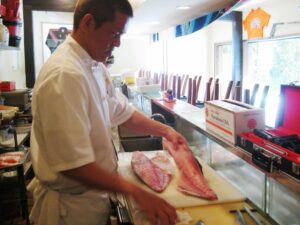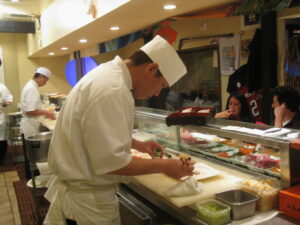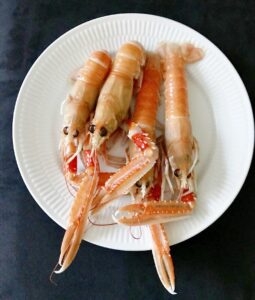Most people know that Tsukiji Fish Market, located in Tokyo, is the largest in the world. The second largest fish market in the world is located in Los Angeles. There are many of the local seafood in Japan lands in Los Angeles and turns into sushi in the exclusive Japanese sushi restaurants.
In Los Angeles, you have Hollywood and celebrities in the film and music industry who love food and, especially, high quality food. So that’s why many Japanese sushi chefs work from some of the best restaurants in Tokyo, Los Angeles. In Los Angeles you can get sushi of the same quality as some of the best sushi restaurants in Tokyo.
When I talk about the best sushi restaurants in Tokyo, it is not those that are on international lists which tourists and others can find.
I talk about the restaurants that the Japanese consider to be the best in Tokyo. That is, restaurants that are not publicly known. The Japanese do not pay that much attention to lists and guides.
I have found a few pictures from 2012. The pictures from the sushi bar in my teacher’s sushi restaurant Bar Hayama.
Read more about Sushi chef & sake sommelier Zoë Escher
_
Zoë has lectured and held sushi courses for A. P. Moller – Maersk, Hugo Boss Nordic, Novo Nordisk, Novartis, Velux, Gorrissen Federspiel, Beierholm revision, Elbek & Vejrup and many more.








